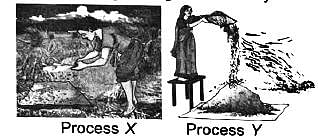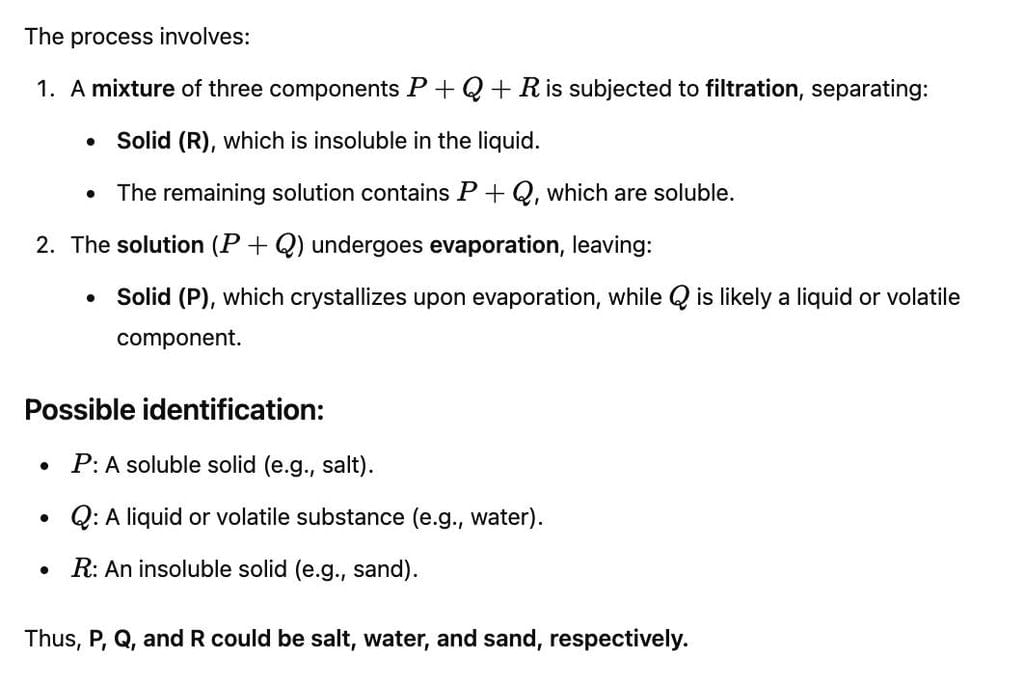Olympiad Test: Sorting and Separation of Materials - 4 - Class 6 MCQ
10 Questions MCQ Test - Olympiad Test: Sorting and Separation of Materials - 4
Vinegar is a solution of acetic acid in water. What kind of mixture is vinegar?
Direction: The following flow chart which gives the techniques a student adopted to separate the constituents of a mixture.

What could the mixture be?

What could the mixture be?
| 1 Crore+ students have signed up on EduRev. Have you? Download the App |
The following flow chart which gives the techniques a student adopted to separate the constituents of a mixture.

What could R be?

What could R be?
The following flow chart which gives the techniques a student adopted to separate the constituents of a mixture.

What is substance Q?
A Identify the mixture from the following.
Study the given table showing some daily used items which can be made from more than one material.

Which of these are incorrect?
Read the given statements and select the correct option.
Statement 1 : Handles of cooking utensils are made up of metals like copper, aluminium, etc.
Statement 2 : Metals are poor conductors of heat.
A science teacher labelled three glass slides as P, Q and R. She painted slide Q with light blue colour, slide R with black colour and slide P was left as such. Then she asked students to put the slide on a white paper having (X) mark on it. Students will be able to see the mark partially
Study the given flow chart carefully.

P, Q and R could be respectively
Observe the given figures carefully.

Identify X and Y respectively.


















